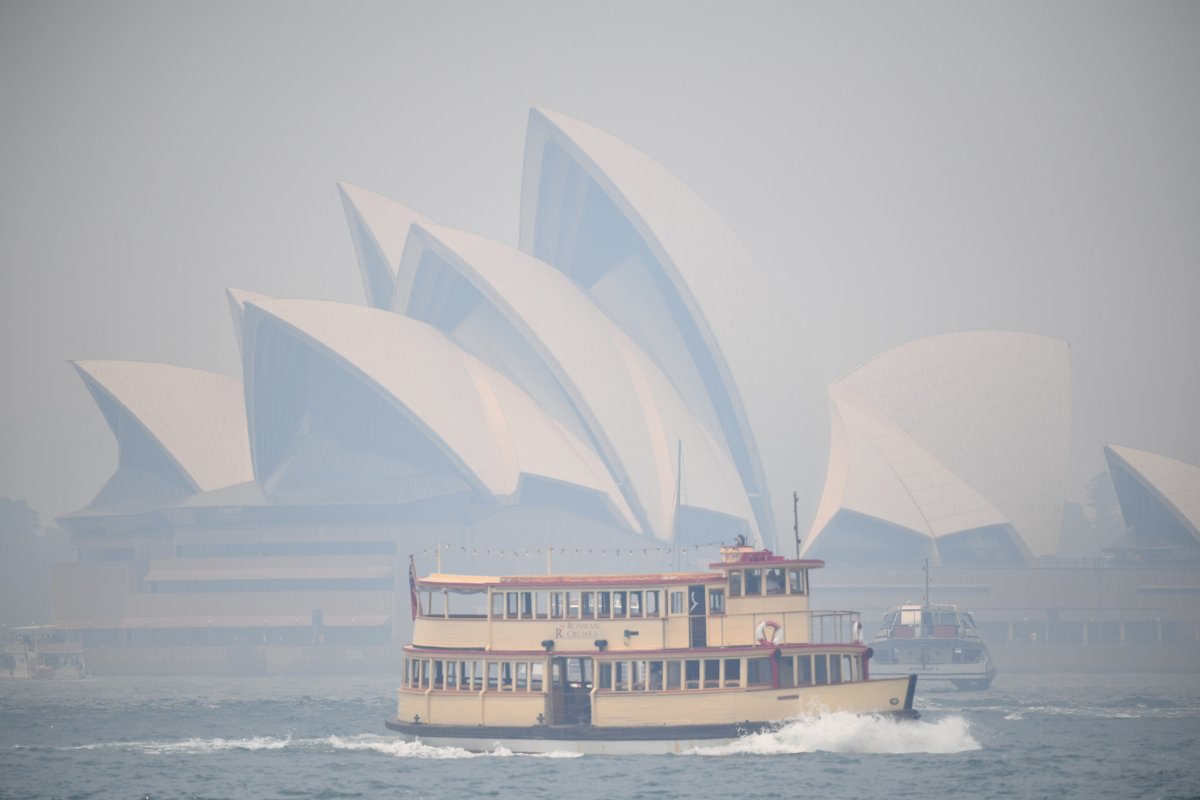Deadly bushfire in Australia is sparking another extreme weather event—so-called firestorms are forming with the potential to exacerbate the disaster further.
A firestorm is when a fire reaches a level of such intensity that it creates its own weather system. At their most extreme, they can form firenadoes—a fire-tornado hybrid. The firestorms in Australia feature pyrocumulonimbus clouds, or pyroCBs, described by NASA as the "fire-breathing dragon of clouds." PyroCbs are large, anvil-shaped clouds of smoke that form from smoke released by volcanoes and wildfires.
"Everything that goes into these phenomena are at their worst when these fires are occurring," David Fromm, an expert on pyroCbs at the U.S. Naval Research Lab, told the National Geographic.
Firestorms develop when a wildfire is especially large and intense. The less dense hot air from the fire rises quickly, channeling a chimney effect (or updraft) that draws colder, denser outside air into the vacuum it creates.
As more and more of the air heats up and is pulled upwards, driven by strong inward-facing winds around the fire, some of that hot air starts to cool and condense, forming pyroclouds—a cocktail of water vapor, smoke and ash.
The strength and severity of these clouds can vary. A pyrocumulus is pyroCbs' less destructive sibling and is less likely to cause much damage. PyroCbs, on the other hand, can be far more intense. They resemble thunderstorms and are also called "fire clouds."
PyroCbscan cause a number of problems. For one, they can send smoke and other pollutants high into the atmosphere—spreading harmful substances across large distances. They can also provoke ember attacks by carrying embers and burning objects across long ranges and dry lightning, which can then trigger new fires.
Though rare, these clouds may produce "firenadoes," pillars of fire and rotating winds with the power to overturn vehicles.
"Understandably, firestorms are the most dangerous and unpredictable manifestations of a bushfire, and are impossible to suppress or control," Rachel Badlan, a postdoctoral researcher in atmospheric dynamics at the University of North South Wales (UNSW), wrote in a piece for The Conversation.

Firestorms have been reported in several countries where wildfire is prevalent, including the U.S., Canada and Russia. But they appear to be becoming more common and more severe as conditions become hotter and drier as a result of human-driven climate change.
Australia has seen a dramatic uptick in the number of firestorms since 2001. According to a piece in Fire Australia, a joint publication from the Bushfire and Natural Hazards Cooperative Research Centre, Australasian Fire and Emergency Service Authorities Council (AFAC) and the Fire Protection Association Australia, there were just two minor pyroCbs reported between 1978 and 2001. The following 15 years (2001 to November 2016) saw 56.
The present fire season has been relentless since it started in November and it has not yet reached February, which typically sees the most deadly fires, as evidenced in 1967, 1983 and 2009.
While bushfires are a regular and natural part of the ecosystem, last year saw an especially hot, dry summer. This dried out the forest vegetation, turning Australia into a tinderbox, and preceded what has been described as an "exceptionally bad season" that is "on a scale not seen before."
However, climate change model projections suggest extreme wildfire seasons could become more common as the number of days conducive to wildfires are predicted to increase worldwide, with a particularly dramatic spike in Australia and the Mediterranean.
"Unfortunately, the fires are continuing with damage progressing, and we are only in January," Ilan Kelman, a professor of disasters and health at Britain's University College London, previously told Newsweek.

Uncommon Knowledge
Newsweek is committed to challenging conventional wisdom and finding connections in the search for common ground.
Newsweek is committed to challenging conventional wisdom and finding connections in the search for common ground.
About the writer
To read how Newsweek uses AI as a newsroom tool, Click here.








